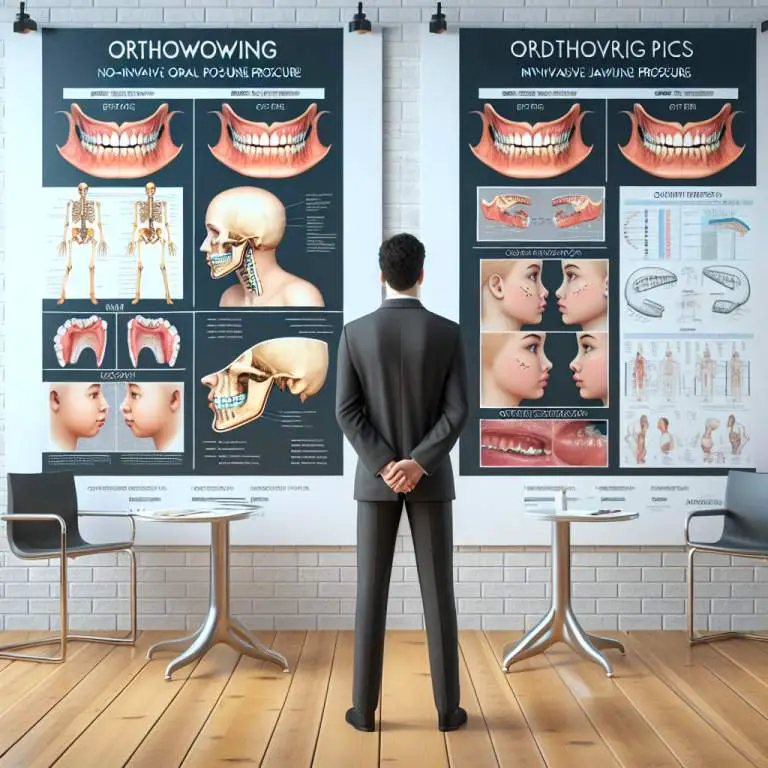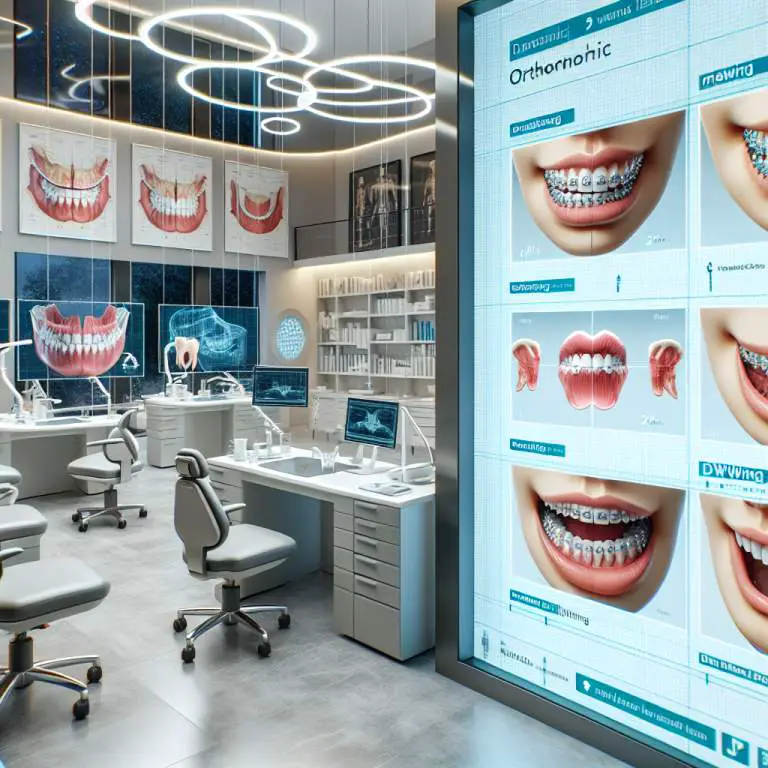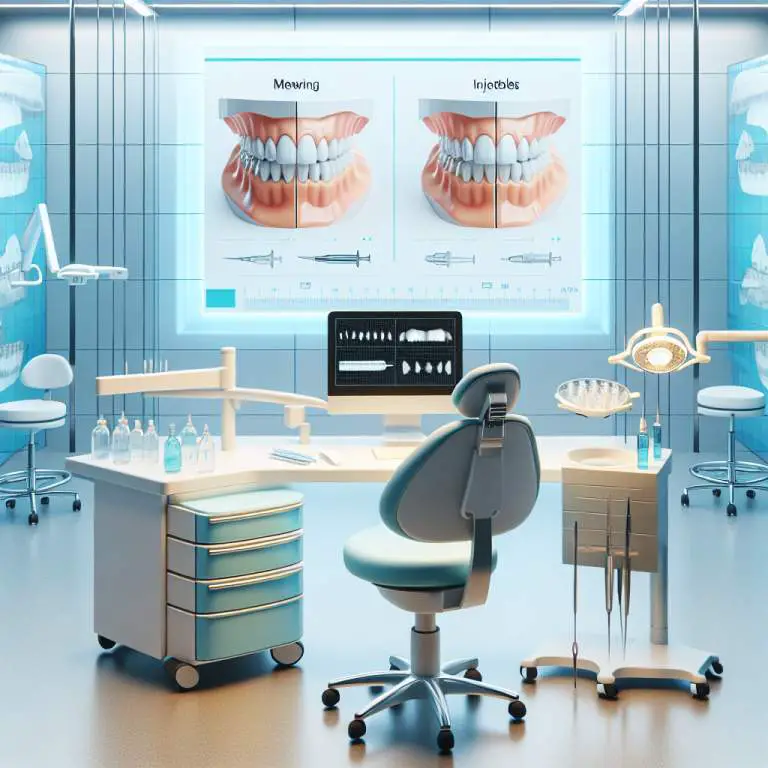Can mewing correct jawline asymmetry as effectively as cosmetic procedures?
Mewing, a technique that involves proper tongue posture, may slightly improve jawline symmetry over time but is not as effective as cosmetic procedures. Cosmetic procedures are designed specifically to correct asymmetries and can provide immediate and noticeable results. While mewing can help with posture and potentially influence the jawline’s appearance, it cannot match the precision and effectiveness of surgical or non-surgical cosmetic options.

How does mewing work to potentially correct jawline asymmetry?
Mewing is a technique that involves positioning your tongue against the roof of your mouth. This position is supposed to help shape the facial structure over time. The idea is that by keeping your tongue in this spot, you can influence the way your jawline looks.
When you practice mewing correctly, it’s believed that you can make changes to your jawline and possibly correct asymmetry. This means if one side of your jaw looks different from the other, mewing might help make both sides look more alike. It’s all about how you hold your tongue and for how long you do it every day.
What are the key differences between mewing and cosmetic procedures for jawline correction?
Mewing and cosmetic procedures are two very different ways to try and fix a jawline that doesn’t look even. Mewing is something you can do on your own by changing how you hold your tongue. It doesn’t cost anything, and you don’t need a doctor to start doing it.
On the other hand, cosmetic procedures for fixing a jawline usually involve surgery or other treatments from medical professionals. These methods can be expensive and often come with risks like any surgery would. Unlike mewing, these procedures can give quick results but also require recovery time.
Can mewing provide noticeable improvements in facial symmetry?
Some people believe that mewing can really help improve how symmetrical their face looks. They say that by doing this technique regularly, they’ve seen changes in their jawline and overall facial balance. However, it’s important to remember that everyone’s face is different, so what works for one person might not work for another.
It’s also worth noting that any improvements from mewing might take a long time to notice. Since it relies on gradually shaping the face, changes could be subtle at first. But for those who stick with it, some have reported positive changes in how their face looks over months or even years of consistent practice.
What are the limitations of mewing in correcting jawline asymmetry?
Mewing has its limits when it comes to fixing an uneven jawline. For starters, it might not work for everyone. Depending on why someone’s jaw is asymmetrical (like genetics or past injuries), simply changing tongue posture might not be enough to see big changes.
Additionally, because mewing is a slow process, some people might get impatient waiting for results. If someone has severe asymmetry or wants quicker results, they might find that cosmetic procedures are more suited to their needs despite the higher cost and potential risks involved.
| Aspect | Mewing | Cosmetic Procedures | |||
|---|---|---|---|---|---|
| Objective | Improve facial structure through tongue posture | Surgically alter physical appearance for symmetry | |||
| Timeframe for Results | Months to years, varies greatly | Immediate to weeks, depending on procedure | |||
| Risks and Side Effects | Minimal, potential for misalignment if done incorrectly | Vary by procedure; can include infection, scarring, dissatisfaction with results | |||
| Costs Involved | No direct costs unless consulting a professional for guidance | High; includes surgeon’s fees, anesthesia, facility costs, etc. | |||
| Efficacy in Creating Symmetry | Potentially effective over time but less predictable | Highly effective and targeted towards specific asymmetries |
How long does it typically take to see results from mewing compared to cosmetic procedures?
Mewing is a process that requires patience and consistency. People often wonder how long they need to practice mewing before noticing changes in their jawline. The answer varies, but many report seeing initial improvements within a few months. However, significant changes can take years of continuous effort.
In contrast, cosmetic procedures offer quicker results. Surgical options like jawline reshaping or fillers provide immediate changes. The recovery time can add to the overall timeline, but the physical transformation is evident much sooner than with mewing practices.
Are there any risks or side effects associated with mewing for jawline correction?
Mewing, when done correctly, is generally considered safe. It involves adjusting your tongue posture and practicing proper swallowing techniques. However, incorrect practice can lead to issues such as TMJ (temporomandibular joint) pain or discomfort in the jaw and neck areas due to strain.
It’s important for individuals to research and understand the correct technique before starting mewing exercises. Consulting with a professional, such as an orthodontist or speech therapist, can help minimize potential risks and ensure that the practice is beneficial rather than harmful.
What do experts say about the effectiveness of mewing versus cosmetic surgery for facial asymmetry?
Experts have mixed opinions on the effectiveness of mewing compared to cosmetic surgery for correcting facial asymmetry. Some dental and orthodontic professionals acknowledge that proper tongue posture can influence facial structure over time, especially in younger individuals whose bones are still growing.
On the other hand, cosmetic surgeons argue that surgery offers a more reliable and immediate solution for significant asymmetries. They point out that while mewing may help with minor adjustments and prevention of further misalignment, it cannot replace surgical intervention for more severe cases.
Final Thoughts
Mewing presents an intriguing option for those looking to improve their jawline symmetry without undergoing surgery. Its appeal lies in its non-invasive nature and the potential health benefits beyond aesthetics, such as improved breathing patterns and posture.
However, it’s crucial to approach mewing with realistic expectations and patience. For those considering this method, thorough research and possibly consulting with healthcare professionals can provide guidance on whether mewing is a suitable approach for their specific situation.







